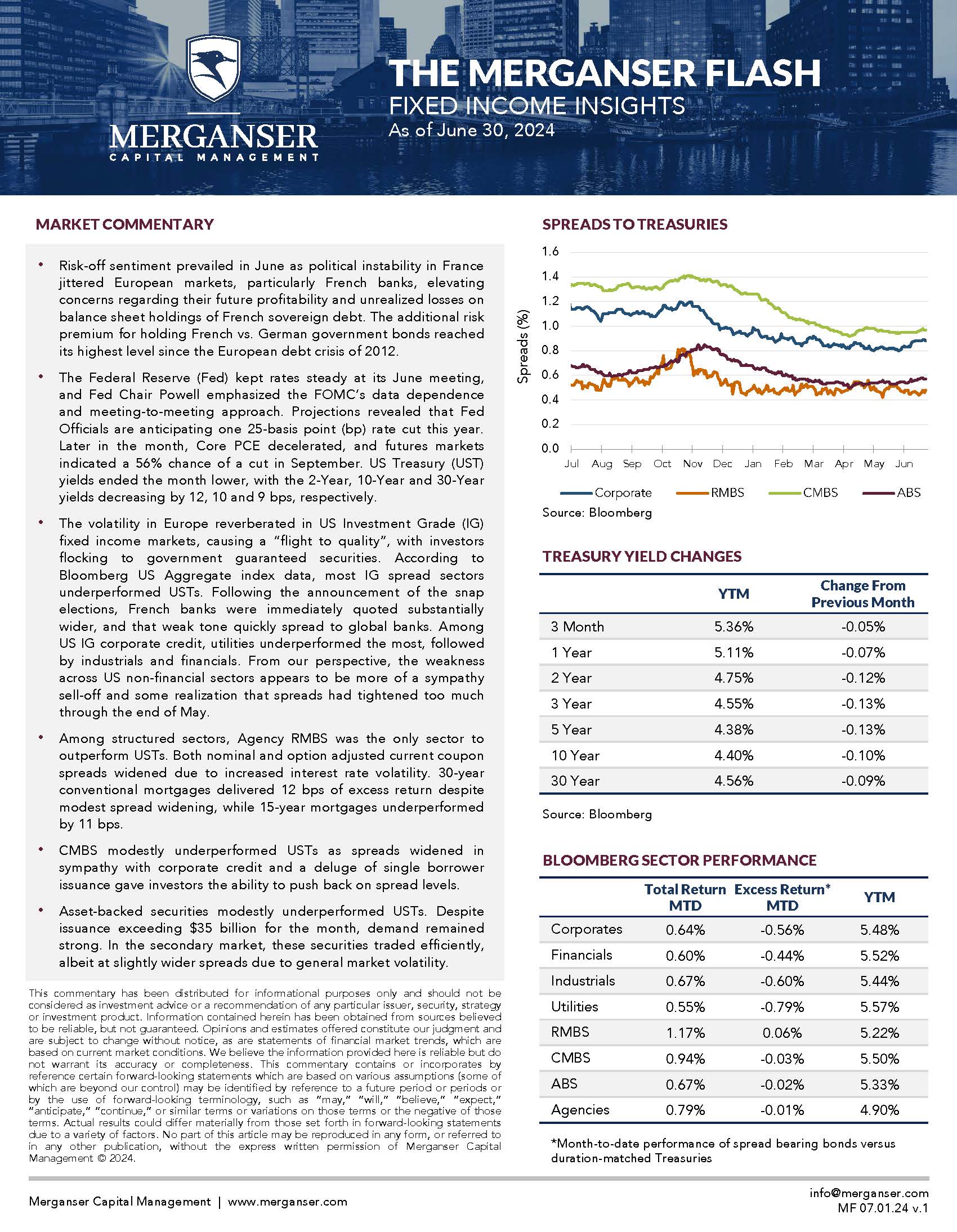- Risk-off sentiment prevailed in June as political instability in France jittered European markets, particularly French banks, elevating concerns regarding their future profitability and unrealized losses on balance sheet holdings of French sovereign debt. The additional risk premium for holding French vs. German government bonds reached its highest level since the European debt crisis of 2012.
- The Federal Reserve (Fed) kept rates steady at its June meeting, and Fed Chair Powell emphasized the FOMC’s data dependence and meeting-to-meeting approach. Projections revealed that Fed Officials are anticipating one 25-basis point (bp) rate cut this year. Later in the month, Core PCE decelerated, and futures markets indicated a 56% chance of a cut in September. US Treasury (UST) yields ended the month lower, with the 2-Year, 10-Year and 30-Year yields decreasing by 12, 10 and 9 bps, respectively.
- The volatility in Europe reverberated in US Investment Grade (IG) fixed income markets, causing a “flight to quality”, with investors flocking to government guaranteed securities. According to Bloomberg US Aggregate index data, most IG spread sectors underperformed USTs. Following the announcement of the snap elections, French banks were immediately quoted substantially wider, and that weak tone quickly spread to global banks. Among US IG corporate credit, utilities underperformed the most, followed by industrials and financials. From our perspective, the weakness across US non-financial sectors appears to be more of a sympathy sell-off and some realization that spreads had tightened too much through the end of May.
- Among structured sectors, Agency RMBS was the only sector to outperform USTs. Both nominal and option adjusted current coupon spreads widened due to increased interest rate volatility. 30-year conventional mortgages delivered 12 bps of excess return despite modest spread widening, while 15-year mortgages underperformed by 11 bps.
- CMBS modestly underperformed USTs as spreads widened in sympathy with corporate credit and a deluge of single borrower issuance gave investors the ability to push back on spread levels.
- Asset-backed securities modestly underperformed USTs. Despite issuance exceeding $35 billion for the month, demand remained strong. In the secondary market, these securities traded efficiently, albeit at slightly wider spreads due to general market volatility.


